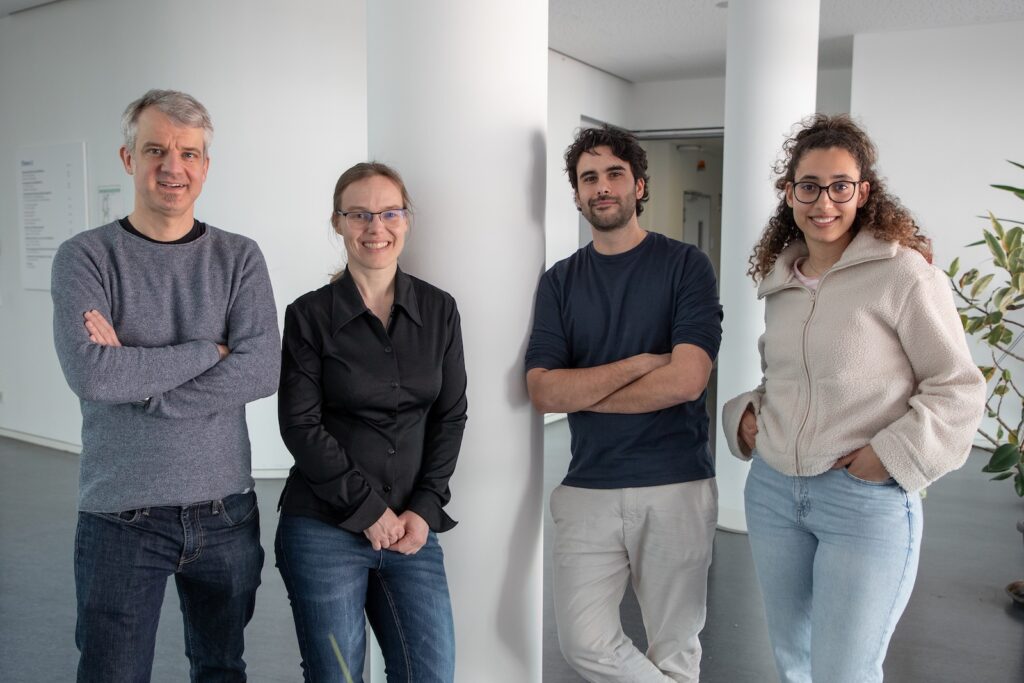Hallmarks of cognitive aging are memory loss, loss of cognitive flexibility, and reduced selective attention. Findings from the RTG’s first funding period suggest that mutual interactions between the hippocampal formation and the medial prefrontal cortex are essential for cognitive flexibility and association learning. Another hallmark of aging is a decline in sensory-perceptual performance. Especially interesting in this respect is the weakening of olfactory perception that not only precedes cognitive decline but also seems to be predictive of it. Using optogenetics in combination with multisite electrophysiology and behavioral testing in mice, our project explores the link between perceptual disturbances in olfactory function and cognitive decline to investigate the underlying causes. Specifically, we will investigate the anterior olfactory nucleus (AON), an olfactory area that stores hippocampal-mediated contextual odor memory and affects gamma synchronization in the medial prefrontal cortex. This project complements and expands the scope of Squad E, implementing sensory circuits for contextual memory formation to explore if changes in cholinergic mechanisms during aging have a generalized effect through multiple brain systems. Moreover, we will also test our hypotheses in translational settings by incorporating basic olfactory assessments in human psychophysical pharmacological tests to investigate the contribution of cholinergic activity on human cognitive and sensory performance.

Markus Rothermel, Daniela Brunert, Dinis Sampaio Pires, Kaoutar Elhabbari
Find out more about the working group by clicking here.
Collaborations:
SynAGE project E2: PI Stork (cognitive/novelty detection testing in rodents)
SynAGE project E3: PI Ullsperger (cholinergic activity on cognitive and sensory performance in humans)
References:
Elhabbari K, Sireci S, Rothermel M, Brunert D. Olfactory deficits in aging and Alzheimer’s – Spotlight on inhibitory interneurons. Front. Neurosci. 18:1503069. doi: 10.3389/fnins.2024.1503069 <https://doi.org/10.3389/fnins.2024.1503069> [X] PMID: 39737436 [X]
Beiersdorfer A, Rothermel M, Lohr C. Human olfaction: odour coding and cross-modal concept representation in single olfactory cortex neurons. Sig Transduct Target Ther 9, 333 (2024). https://doi.org/10.1038/s41392-024-02073-y [X] PMID: 39604387 [X]
Brunert D, Medinaceli Quintela R, Rothermel M. The anterior olfactory nucleus revisited – An emerging role for neuropathological conditions? Prog Neurobiol. (2023) https://doi.org/10.1016/j.pneurobio.2023.102486 [X] PMID: 37343762 [X] .
Medinaceli Quintela R, Bauer J, Wallhorn L, Le K, Brunert D, Rothermel M. Dynamic impairment of olfactory behavior and signaling mediated by an olfactory corticofugal system. J Neurosci. (2020); https://doi.org/10.1523/JNEUROSCI.2667-19.2020 [X] ; PMID: 32817250 [X]
Böhm E, Brunert D, Rothermel M. Input dependent modulation of olfactory bulb activity by HDB GABAergic projections. Scientific Reports ,10, 10696 (2020). https://doi.org/10.1038/s41598-020-67276-z [X] ; PMID: 32612119 [X]
Jo HG, Wudarczyk O, Leclerc M, Regenbogen C, Lampert A, Rothermel M, Habel U. Effect of odor pleasantness on heat-induced pain: An fMRI study. Brain Imaging and Behavior (2020). https://doi.org/10.1007/s11682-020-00328-0 [X] ; PMID: 32770446 [X]
Rothermel M, Carey RM, Puche A, Shipley MT, Wachowiak M. Cholinergic inputs from Basal forebrain add an excitatory bias to odor coding in the olfactory bulb. J Neurosci. (2014); 34(13):4654-64. https://doi.org/10.1523/JNEUROSCI.5026-13.2014 [X] ; PMID: 24672011 [X]
